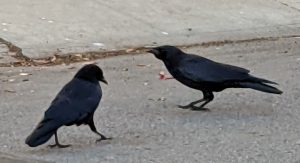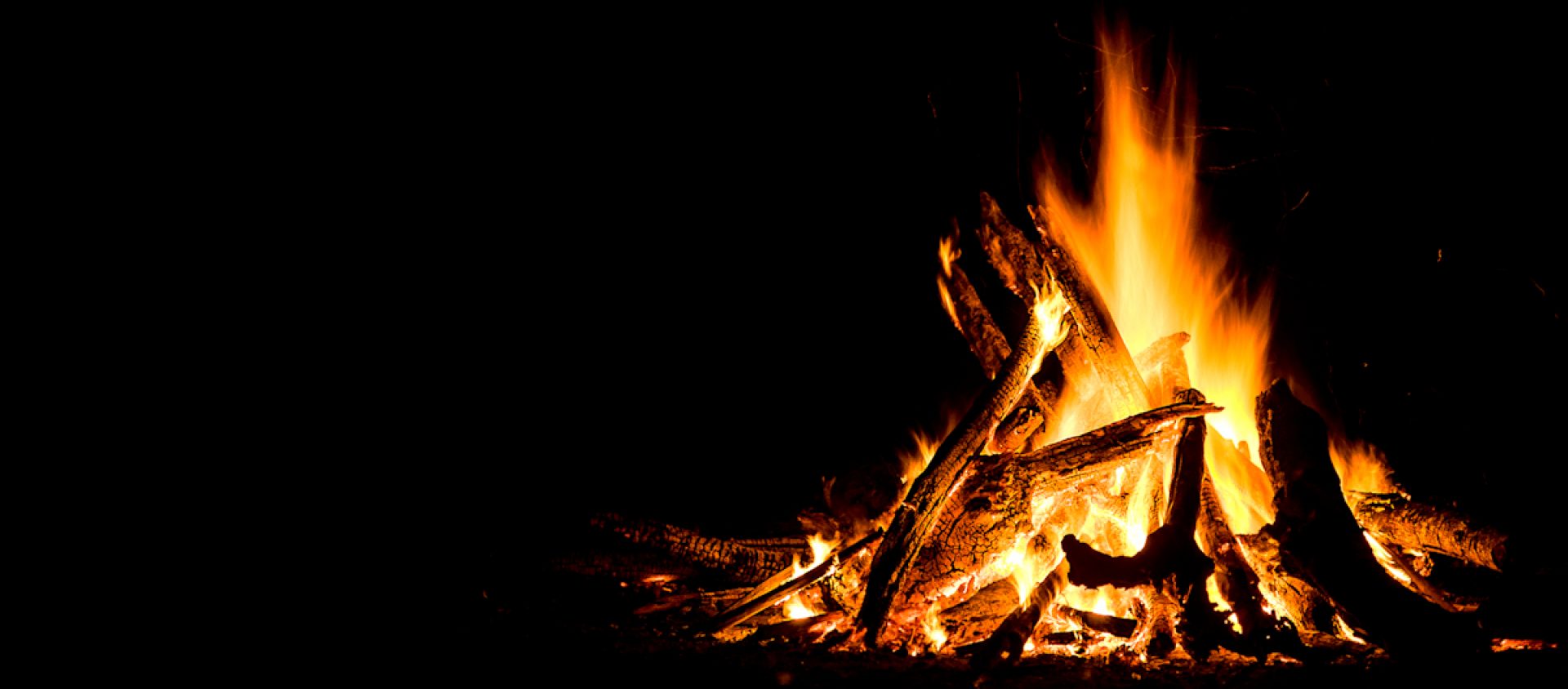 Shortly after dawn most mornings, a crow calls loudly, “Caw, caw, caw, caw.” It seems to be speaking to the whole neighborhood of crows, though I’m not sure how large an area this announcement covers. I refer to this as the “Call to Prayer,” because it reminds me of the calls used by mosques, but I don’t know its true purpose.
Shortly after dawn most mornings, a crow calls loudly, “Caw, caw, caw, caw.” It seems to be speaking to the whole neighborhood of crows, though I’m not sure how large an area this announcement covers. I refer to this as the “Call to Prayer,” because it reminds me of the calls used by mosques, but I don’t know its true purpose.
Shortly after the call, crows come by our window box, collect the cat kibble we put out the night before, and have a drink in the pan we’ve put out for that purpose. The actual time this happens varies depending on what time the sun comes up. It can be a bit later on days when the marine layer is strong, but the crows will be out and about even on overcast days.
Except when they’re sitting on eggs and raising fledglings, the crows don’t sleep in our neighborhood. Every evening, not long before sunset, they start flying to their roost. I am told by others that one big roosting place is along the Berkeley shoreline. I suspect there are a number; there are a lot of crows in the East Bay.
They do build nests in our neighborhood, but we have never been sure exactly where their nests are. They are very good at concealing them in the larger trees somewhere.
Crows are obviously quite social. They hang out in family groups, some of them clearly the young from earlier in the year or a year or two before. However, each small family group has territory within the neighborhood, and they seem to be careful not to invade each other’s areas.
They can tell people apart, which puts them one up on us, because we cannot tell crows apart by appearance. We know one group because of where we see them regularly and because they have almost no fear of us. When we toss kibble for them, they will fly right down. Others, who also live nearby, wait until we’ve moved on to collect the goodies.
We got to know crows because Jim had heard that you could befriend them. He started carrying kibble with him and offering it to crows he met. But we did not get a real response until the pandemic, when we spent a lot of time walking around the same parts of the neighborhood. We got to know one crow, which one of our neighbors thought was “Boo,” the one she’d met when it had injured a wing and she had called wildlife rescue, who took it in, set the wing, and brought it back to the neighborhood.
It was friendly, and took to us immediately. Later, it brought around a friend — I think its partner. We began seeing them regularly on Rich Street, a block over, at the odd intersection with 42nd Street where there’s a church. But the two followed us home and figured out where we lived. They began to yell for us outside our apartment; in fact, they figured out both the front windows and the side window, where Jim sits at his computer all day.
When they were nesting, the partner (I think, though I cannot tell their sex or gender and have no idea which one might have laid eggs and don’t even know for sure whether they take turns sitting on them) would come by and loudly demand food outside the office window. We dubbed that one Big and Noisy.
It is important to note that they know where we live, even though we don’t know where they live, just as they know what we look like even though we can’t tell them apart (except for the fledglings when they are still adolescent, because their voices are different even as they get close to grown).
They do hold meetings in our neighborhood, often in a big tree on 42nd and Shafter. We have watched them harass raptors out of the neighborhood.
We don’t see them after dark. I have read that crows don’t see well at night. Anyway, they are all at the roost.
They aren’t picky eaters. I know a lot of people feed them peanuts, but we have stayed with cheap cat food. We notice that they often hang out in the dumpster at Church’s Fried Chicken and they do eat some roadkill. We figure the kibble won’t hurt them.
The crows that know us have followed me as far from home as 44th and Telegraph Avenue, but mostly we see them on our street, on Rich, and on 42nd. They often attract our attention by flying low over our heads so we’ll know we’re there. A crow sitting high on a telephone pole and cawing might not be talking to us, but one that flies just above us and lands on a street sign definitely is.
Not only have I learned a lot about crows by observation (though possibly not as much as crows have learned about me), I have discovered one other thing from this pastime: Paying close attention to something outside yourself can teach you a lot.
I need to try this beyond crows.

How interesting I know more about Crows than I ever did. Of course your writing makes it interesting. Good lesson on what you can learn just sitting and watching!
There are a lot of good books on the subject, but it’s more fun to just feed them and pay attention!
I want this post to have a “corvid life” tag as well.
Thanks for sharing! I have been trying to befriend the local crows, but because of bears I can’t leave very enticing foods out in the warmer months. This time of year it’s a bit easier. I have tried cracked corn, but with only marginal success, I think the jays like it better than the crows do.
Corvid life would be a good tag!
I was once out without any kibble for the crows and the neighbors gave me some birdseed, but it was not a big hit. Cheap cat kibble seems to be the way to go.
There’s a New England naturalist… Bernd Heinrich… who studied crows and wrote about them. Read ‘A Year in the Maine a Woods’. He has a crow named Jack.
That sounds great. I’ll look for it.